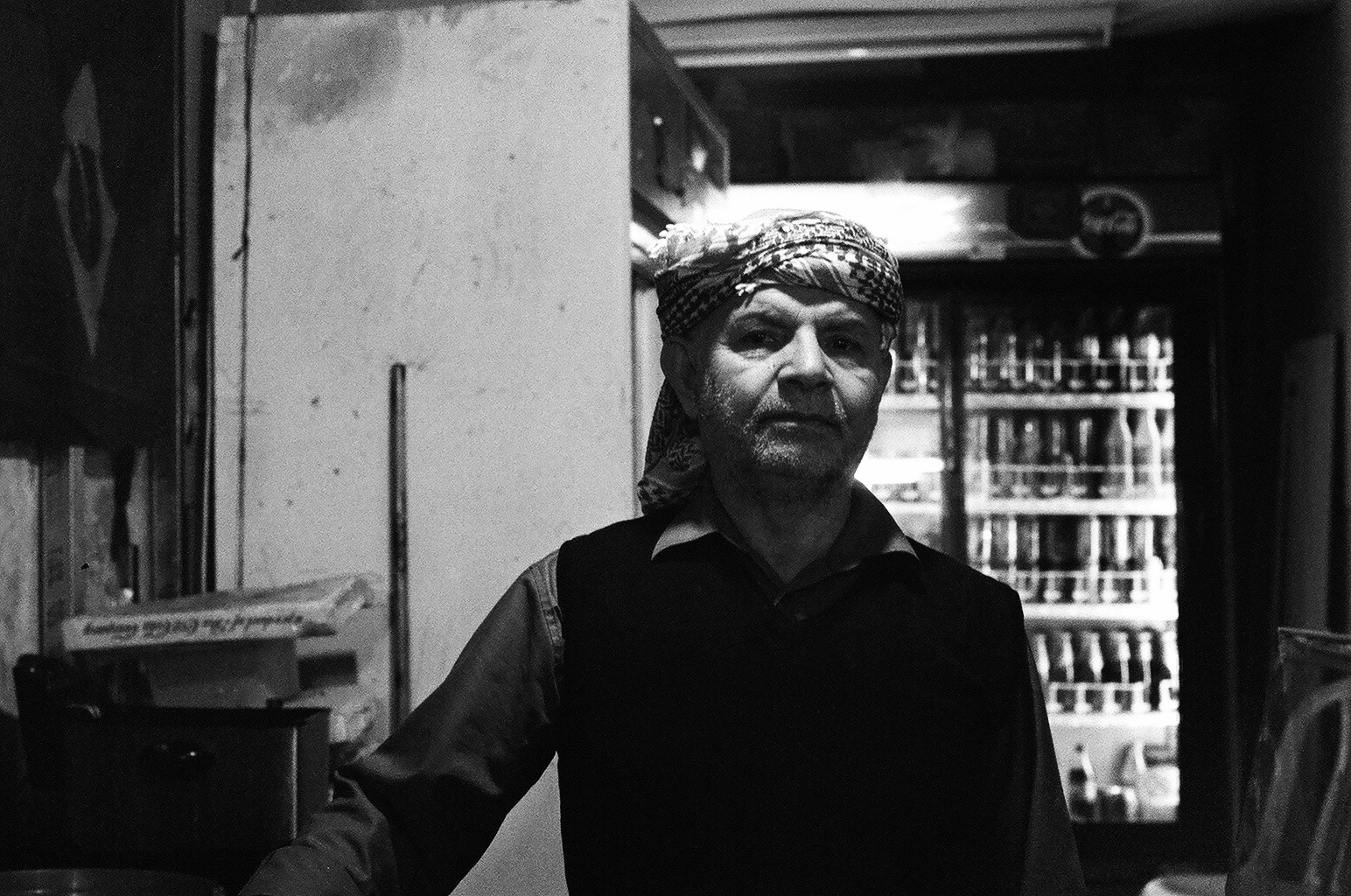
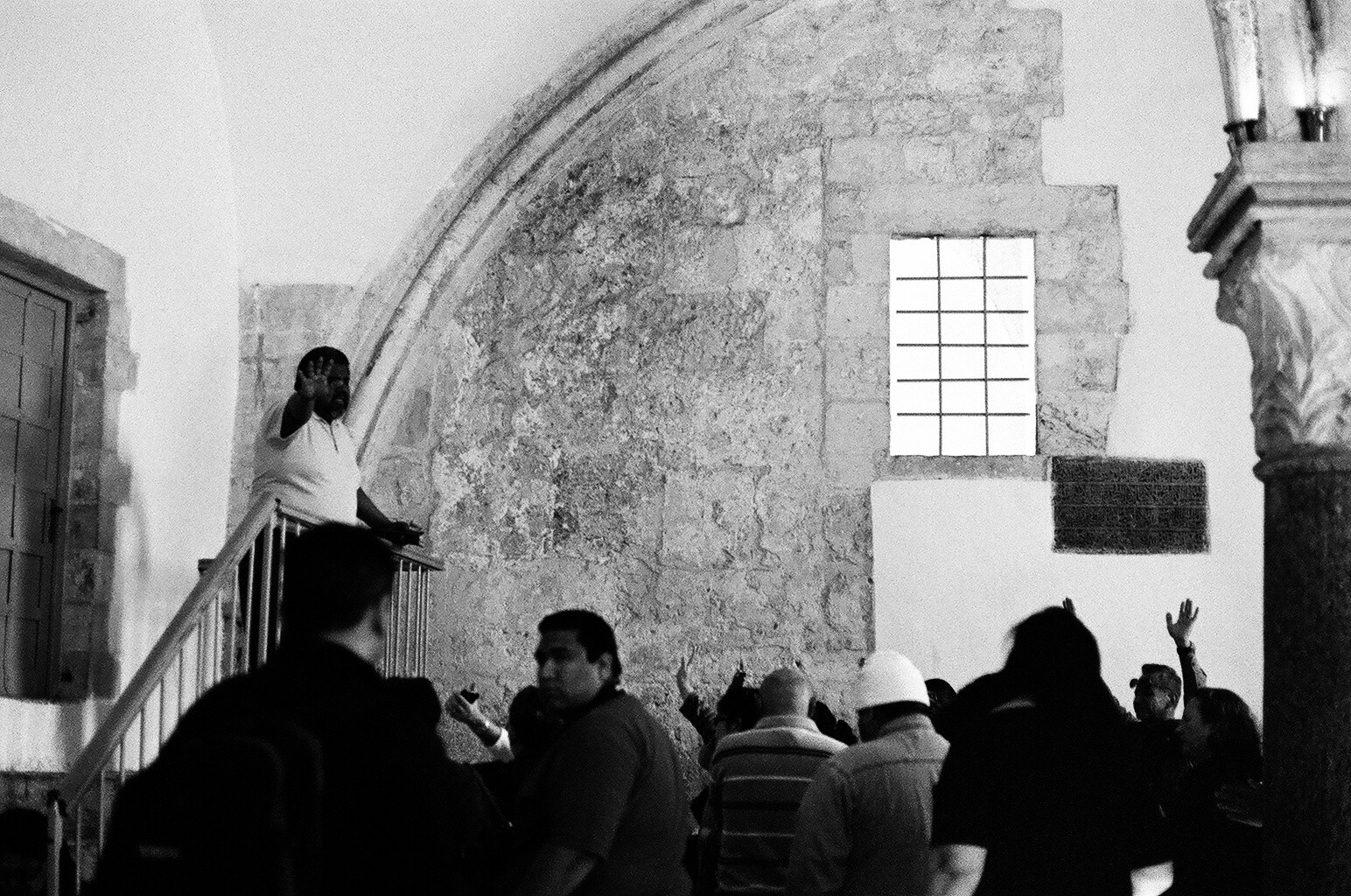
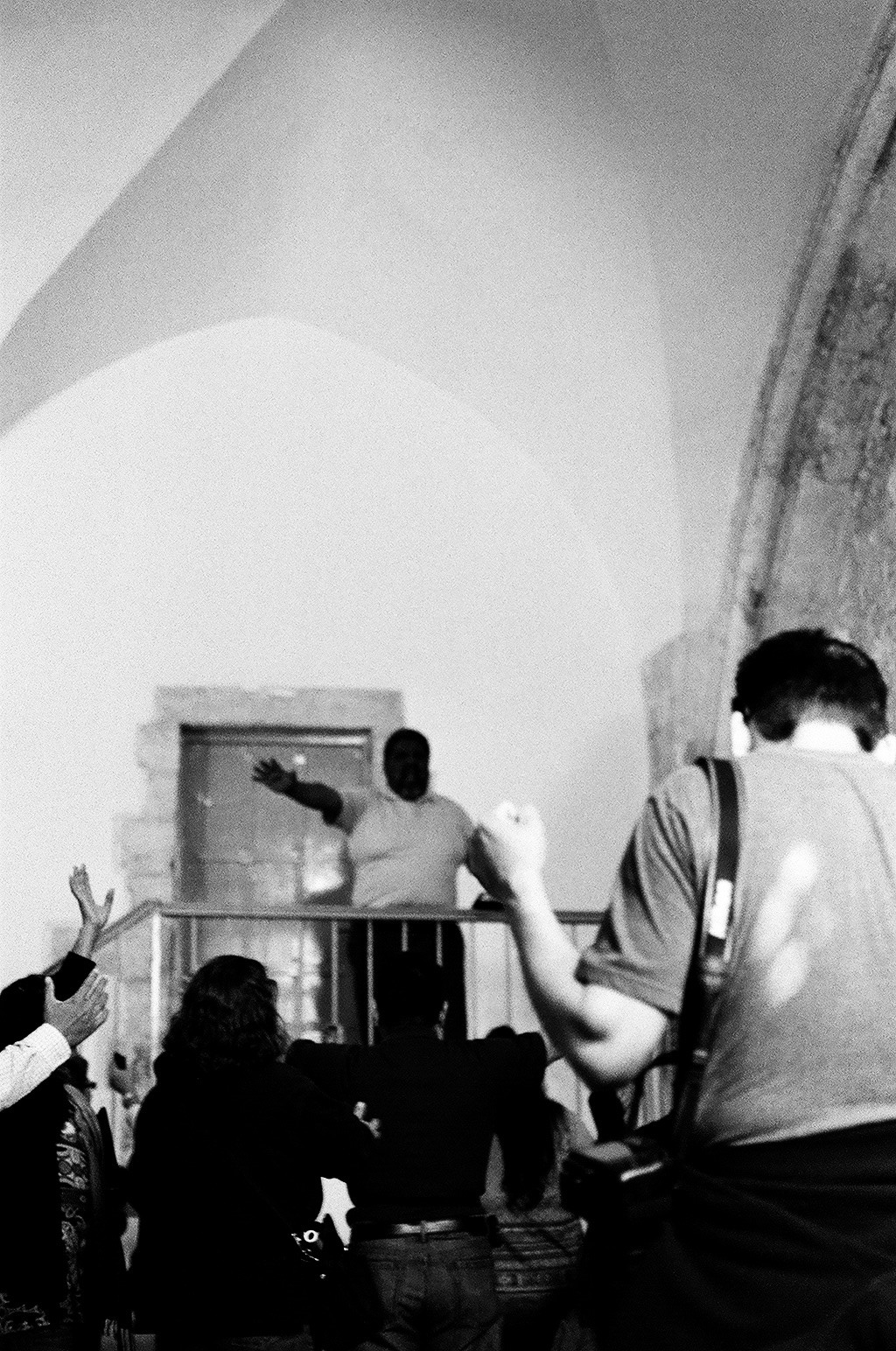
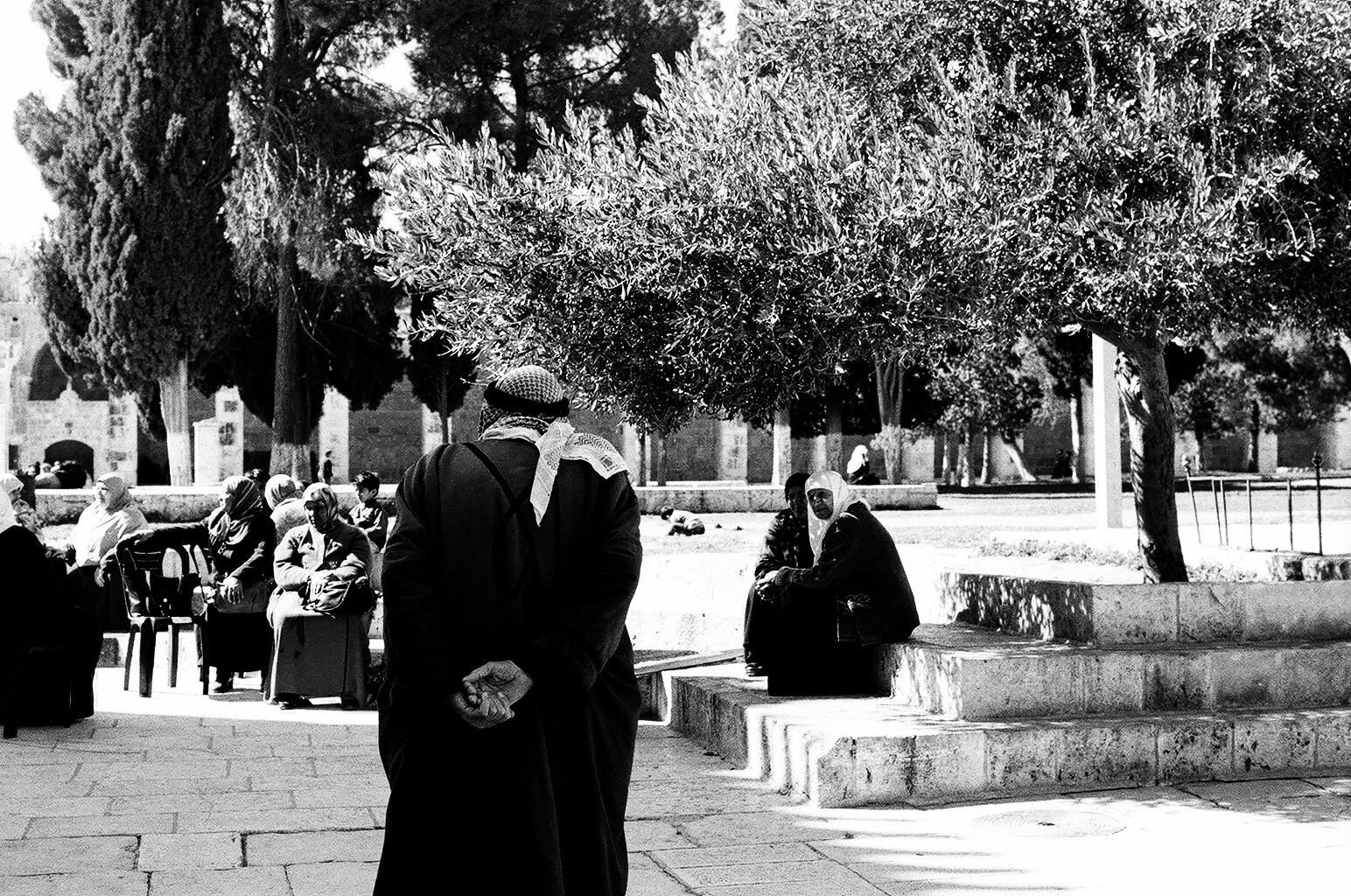
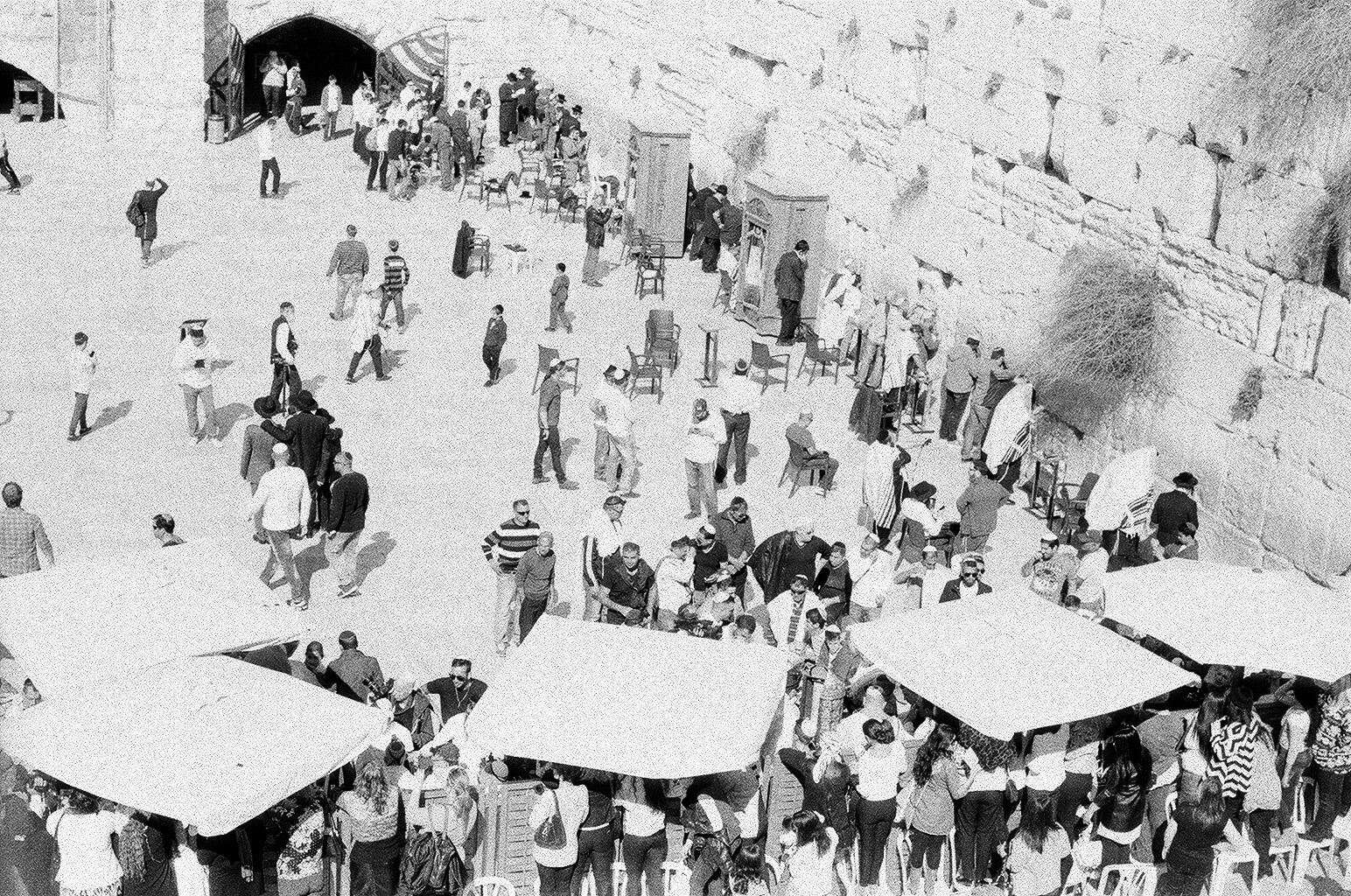
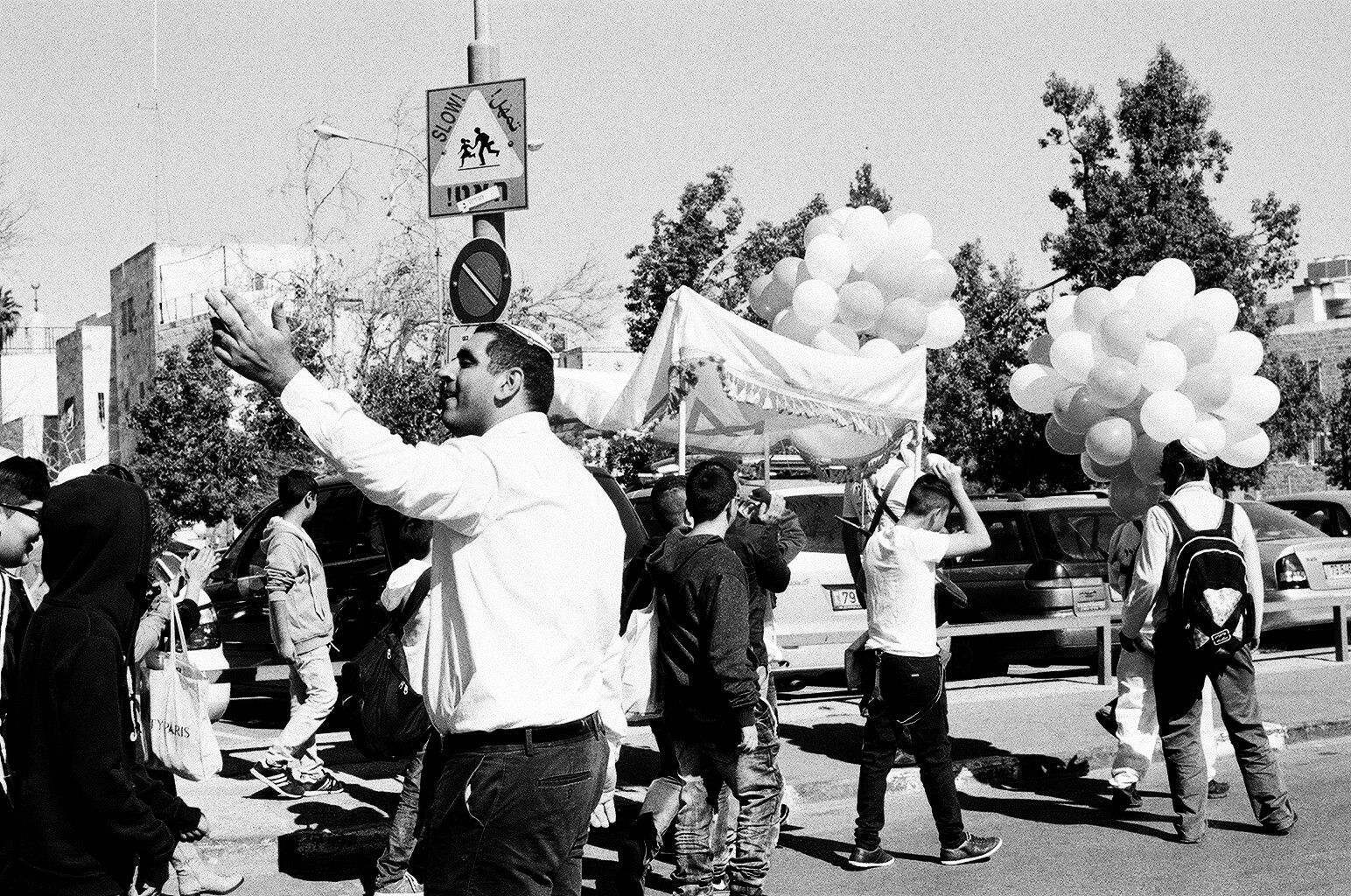
Even after over a year of living here, I find myself wandering around the Old City of Jerusalem with eyes wide open, absorbing all the sites and sounds and smells of this contested and beating heart of Jerusalem. My feet find their way over the familiar stones and roads, but with the curiosity and knowledge that there will always be corners of this walled-in area that I'll never see and never know.
As I was walking down the main road that connects Zion Gate to Damascus Gate in the heart of the Muslim quarter, I was struck by this feeling. Surrounded by shop-owners coaxing me to buy t-shirts with either Israeli or Palestinian flags, Arabic music floats towards me on wafts of incense from a Christian shop, Palestinian mothers herd their children into a shop to buy ful and hummus, and suddenly I was overwhelmed by a large group of Christians from Africa. They were clapping and singing and wearing bright, printed, purple cloth wrapped around their bodies and crying out for their lord and savior Jesus Christ. I stepped to the side of the narrow road to let them pass, and in that moment an Ultra-Orthodox Jewish man on a bicycle tries to make his way straight through the crowd—payot flying in the wind.
This is Jerusalem: so many different cultures and groups interacting in such close quarters.
I've designed a tour of the Old City for the friends who come visit; it is mainly organized around food and my favorite corners. We walk through Damascus Gate and the Muslim quarter, grab date ma'amoul cookies from the vendor whose cart sits right under the arched entrance way, stop to sit in Jafaar's for the best knaffe in the city (an insanely delicious Arabic pastry that combines salty cheese and sweet syrup), and a walk through the Church of Holy Sepulcher where we see pilgrims sobbing over the rock where Jesus was said to have lain. I point out the Mamluk architecture, the water fountains of Sultan Suleiman, and the stone Crusader motifs that have been reused and incorporated into new constructions before we stop at the Austrian Hospice to enter an old-school European, Imperialist oasis and eat Apple-strudel. We then wander our way to the Kotel (Western Wall) and stare stupefied at the large and divided crowds of Jewish men and women pushing their way in the plaza for access to the ancient stones. We always attempt to get up to Haram al-Sharif (Temple Mount) and see al-Aqsa Mosque and the Dome of the Rock where Muslims lounge around under the shade of trees and the gaze of soldiers, but the hours are sporadic and often we miss the moment to take in the intricate mosaics. I then lead the way back up the hill to pass through the gift shop of the Institute of Temple Studies (where an organization has founded the construction of all the necessary accoutrements for the Third Temple according to the specifications in the Bible. You can buy a build your own Model-3D Third Temple kit). After being overwhelmed by so much belief, I drag tired friends straight to my favorite corner near Zion Gate: Dormition Abbey with the tomb of Mary, and David's Tomb.
The Dormition is, I claim, the most feminist corner of Jerusalem. In the basement there is the crypt, where a statue of the Virgin Mary seems to be asleep, her face looking up towards a giant mosaic of Jesus’ face. Yet surrounding his image, and her sleeping space, are mosaic portraits of every woman character of the Bible. In this quiet, cool basement, away from the heat and the crowds, I always find a sweet moment to catch my breath and give my dues to the women who are often overlooked in these grand narratives.
David’s Tomb is, again, a tiny corner of Jerusalem where you see the overlapping of worlds. Located right outside the exit of Zion Gate, this small building houses a different story on each floor. The ground floor supposedly has the tomb of King David, and has become an important site of pilgrimage for Jews. Local religious Jews come daily to pray at the feet of the Biblical King. The second floor is supposedly the site of the Last Supper which was converted into a mosque under the Ottomans. I’ve often stumbled upon large Christian tourist groups experiencing a moment of religious ecstasy with the mihrab pointing out the direction towards Mecca behind them. Then if you climb a flight of stairs and stand on the roof, the minaret and dome above the building tell you that the entire building was once a mosque under the Ottoman Empire. The experience of climbing the stairs and walking through different rooms and levels of narratives without ever leaving a ten-foot radius is always astounding. It begins to make you question the idea that Jerusalem could be divided under different authorities—how do you divide three different floors of one building?
If you walk around in the Muslim Quarter, this sentiment is echoed even further. From the rooftop of houses, you can see the pockets of Jewish apartments that have been purchased in the Old City, and are now under constant surveillance and security, large Israeli flags marks their presence. Inspired by Ariel Sharon’s purchase of an apartment in 1987 over a main street in the Muslim Quarter, the movement to purchase homes and “Judaize” the other quarters of the Old City further solidifies the question of dividing rule. Organizations like Free Jerusalem keep an eye on the eviction of Palestinian families and you can see these settler houses marked clearly on the maps compiled by Terrestrial Jerusalem here: http://t-j.org.il/JerusalemAtlas.aspx
I once had a tour guide who used to be a security guard for one of these apartments. He led us through winding paths deep in the Muslim quarter where I had never been before. He shared that the experience was harder than when he had been in the army. They were required to accompany the residents anywhere they went when they left the building complex and faced constant threat from the Muslim neighbors who did not want these families living there. As he double-checked that the magnetic lock of the door had slammed behind us, he said he has never feared for his life, until he began working there. He quit after only half a year; the experience was too trying emotionally, mentally, and physically. He opened a door, and led us onto a rooftop with an incredible view of the entire Old City and the sparkling gold Dome of the Rock.
The Old City is used as a focal point for the Israeli-Palestinian conflict, and often it simplifies the history into just a fight between religions. I always shy away from this conclusion; I don’t think it is correct to say that this is just an age-old story of Jewish and Muslim tensions. Such a conclusion overlooks the very vibrant and intercommunal relations that existed between these communities, and that still exist today. Simplifying the conflict of national determination and geopolitical context into a religious battle of will also overlooks the nuances of the narratives of the many groups who live here and have lived here before. Religion may play a role in the problems that are impeding a solution or that pour oil on an already simmering fire, but this ignores the historical contexts.
The Old City is a never-ending experience of many different realities and narratives. I've heard rumors of secret networks of tunnels that connect the monasteries of monks, and I wouldn’t be surprised. That would add one more layer under our feet to this multi-layered place.